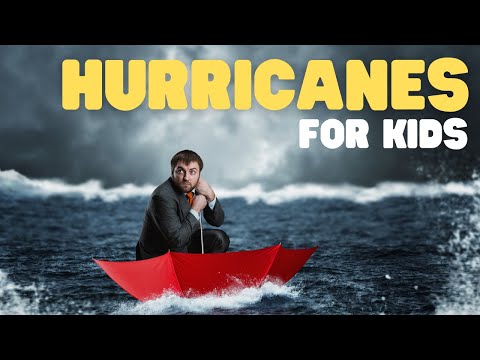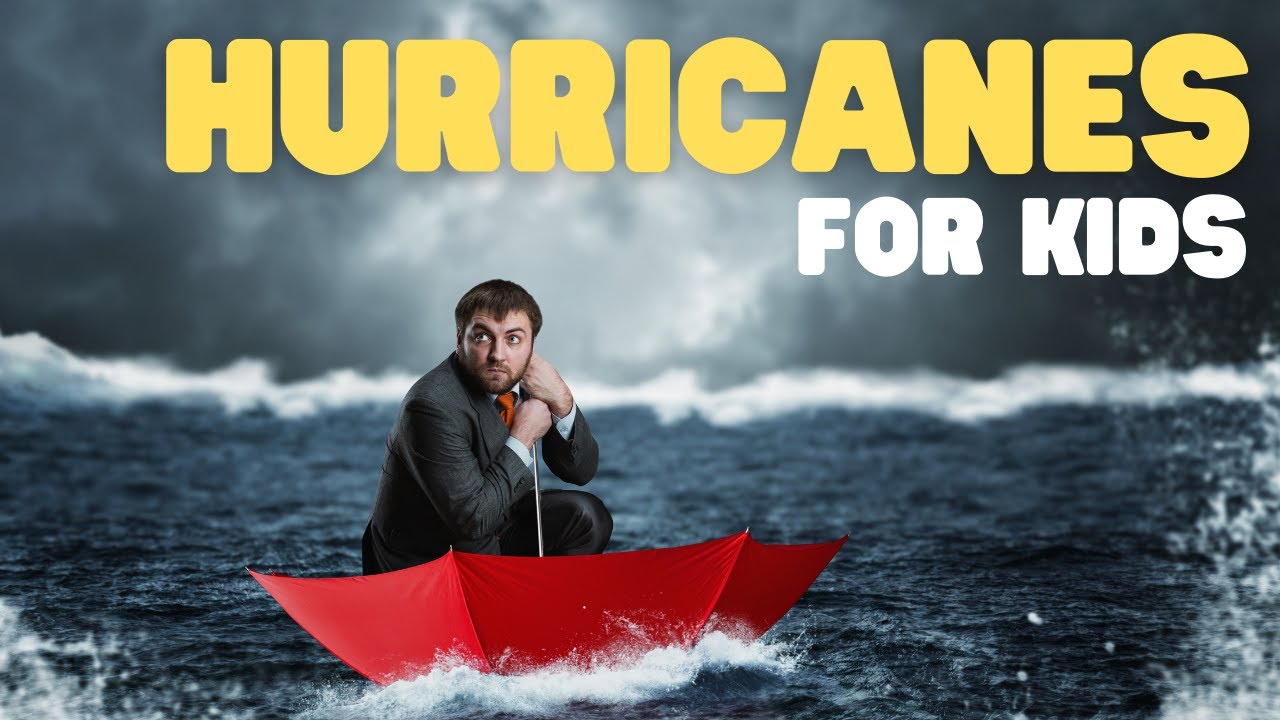Discover the Fascinating Origins of Hurricanes: Unveiling the Mysteries of Nature’s Wrath – Delve into the awe-inspiring realm of hurricanes as we unravel the enigma behind these powerful natural phenomena. Brace yourself for a captivating journey that uncovers the intricate mechanisms driving these colossal storms. Explore the unpredictable forces of nature, as warm ocean waters serve as a catalyst for hurricane formation. Immerse yourself in the captivating science behind atmospheric dynamics and the mesmerizing interplay between air pressure, moisture, and wind. Unveil the mysteries of how hurricanes transform from mere disturbances to mighty swirling vortexes, capable of unleashing torrential rains, destructive winds, and devastating storm surges. Engage in a thrilling exploration of the immense power harbored within these meteorological marvels, as you gain a newfound appreciation for the intricate balance that governs our planet’s climate system. Embark on a journey of knowledge as you uncover the awe-inspiring wonders of hurricanes and the forces that shape our world.

Causes of a Hurricane
| Factor | Description |
|---|---|
| Warm Ocean Waters | Hurricanes are fueled by warm ocean waters with surface temperatures exceeding 80°F (27°C). These warm waters provide the immense energy required for the formation and intensification of a hurricane. |
| Moisture and Humidity | Adequate moisture and high humidity levels in the atmosphere are vital for hurricane development. As warm air rises from the ocean surface, it condenses and forms clouds, releasing latent heat that further powers the storm. |
| Low Vertical Wind Shear | A hurricane requires low vertical wind shear, which means minimal change in wind direction and speed with height. This allows the storm to maintain its organization, enabling strong updrafts and preventing the storm from dissipating. |
| Coriolis Effect | The Coriolis effect, caused by the rotation of the Earth, influences hurricane formation. In the Northern Hemisphere, hurricanes rotate counterclockwise due to the Coriolis effect, while they rotate clockwise in the Southern Hemisphere. This effect contributes to the cyclonic nature of hurricanes. |
| Pre-existing Disturbances | Pre-existing disturbances, such as tropical waves or low-pressure systems, can serve as the initial trigger for hurricane formation. These disturbances provide a starting point for the development of a tropical cyclone, which can then intensify into a hurricane under favorable conditions. |
| Location | Hurricanes typically form in tropical and subtropical regions, where the ocean waters are sufficiently warm and the atmospheric conditions are conducive to storm development. The specific location and prevailing weather patterns greatly influence the likelihood of hurricane formation. |
Unleashing Nature’s Fury: Unraveling the Mysteries of Hurricanes
The Cause of a Hurricane
Unleashing Nature’s Fury: Understanding the Origins of Hurricanes
Each year, when hurricane season arrives, coastal regions brace themselves for the potential devastation that these natural disasters can bring. But have you ever wondered what causes a hurricane? How do these monstrous storms form and gain their immense power? In this article, we will explore the science behind hurricanes and delve into the factors that contribute to their formation and intensity.
The Ingredients for Disaster: The Formation of a Hurricane
Hurricanes are tropical cyclones, large swirling storms that originate over warm ocean waters near the equator. To understand the cause of a hurricane, we must first look at the key ingredients needed for their formation:
Warm Ocean Waters: Fueling the Storm
Warm ocean waters act as the primary fuel for hurricanes. As the sun’s rays heat the surface of the ocean, the warm water provides the energy necessary for the storm to intensify. The ideal ocean temperature for hurricane formation is around 80°F, as it allows for maximum evaporation, which is a crucial process in the development of these storms.
Moisture in the Air: Building the Storm
While warm ocean waters provide the energy, moisture in the air fuels the development of a hurricane. As the warm air rises from the ocean’s surface, it carries with it the evaporated moisture. This moist air then condenses to form clouds, releasing even more heat into the atmosphere. This continuous cycle of evaporation and condensation drives the storm’s growth and intensification.
Coriolis Effect: The Spinning Motion
The Coriolis effect plays a crucial role in the formation of hurricanes. This effect is a result of the Earth’s rotation, causing moving air and water masses to rotate in a curved path. As the moist air rises and begins to spin, the Coriolis effect causes the air to rotate counterclockwise in the Northern Hemisphere and clockwise in the Southern Hemisphere. This rotation creates the characteristic spinning motion of hurricanes.
Calm Atmosphere: A Recipe for Disaster
A calm atmosphere is necessary for a hurricane to form and thrive. High-altitude winds can disrupt the storm’s circulation and prevent its development. When the atmosphere is calm, the warm, moist air can rise freely and form the characteristic eyewall, the region of most intense winds and rainfall within the hurricane. A combination of low wind shear and stable atmospheric conditions is essential for a hurricane to reach its full potential.
The Wrath of Nature Unleashed: The Intensity of a Hurricane
Once a hurricane has formed, various factors contribute to its intensity and destructiveness:
Sea Surface Temperature: The Heat Engine
Sea surface temperature plays a significant role in determining the intensity of a hurricane. Warmer waters provide more energy and moisture, fueling the storm’s growth. As the storm moves over colder water or land, it loses its source of energy, causing it to weaken. Consequently, hurricanes tend to be most intense when they are over warm ocean waters.
Wind Shear: The Storm’s Worst Enemy
Wind shear refers to the change in wind speed and direction with height. When a hurricane encounters strong wind shear, it disrupts the storm’s structure and inhibits its growth. High wind shear can tear the storm apart, preventing it from intensifying or even causing it to dissipate. On the other hand, low wind shear allows for the storm to maintain its structure and intensify to its full potential.
Atmospheric Stability: A Necessary Balance
The atmospheric stability also plays a role in determining a hurricane’s intensity. Stable atmospheric conditions, with a decrease in temperature and moisture as altitude increases, inhibit the storm’s development. However, when the atmosphere is unstable, warm air can rise freely, providing the necessary fuel for the hurricane to intensify rapidly. The balance between stability and instability greatly influences the storm’s potential for destruction.
In Conclusion
In summary, the cause of a hurricane can be attributed to a combination of factors, including warm ocean waters, moisture in the air, the Coriolis effect, a calm atmosphere, sea surface temperature, wind shear, and atmospheric stability. Understanding these factors and their interactions can help meteorologists predict and track hurricanes, allowing communities to prepare and minimize the impact of these powerful storms.
While the cause of a hurricane may seem complex, the ultimate result is a force of nature that demands respect and caution. By studying these storms and learning from their occurrence, we can improve our understanding of the natural world and work towards better disaster preparedness.

